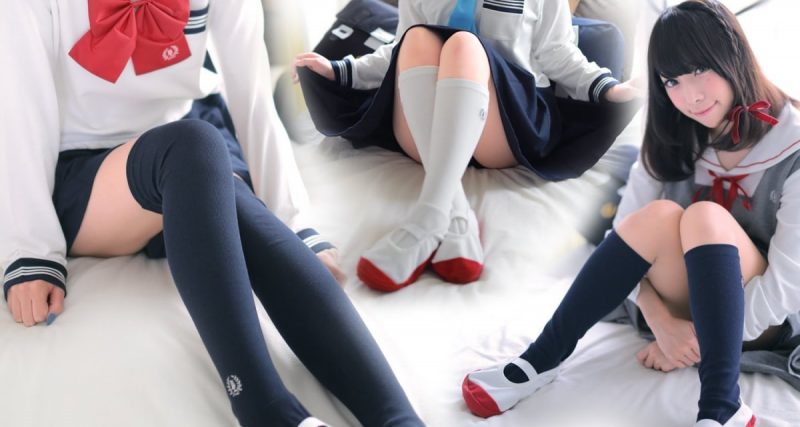Japanese schoolgirls have an unmistakable charm that transcends borders, far beyond the screens of anime and manga. Their iconic uniforms and cultural habits spark global interest, but the world of Japanese students is much more complex and intriguing than it seems. This article delves into curiosities and unique aspects, uncovering everything from customs to bizarre trends.
This article is based on the video we posted on our channel. If you want to watch it, we will leave it below:
Table of Content
Uniforms and the Culture of Short Skirts
The uniforms of Japanese students, especially the skirts, are a symbol of fashion and culture. Although they often seem extremely short, the truth is that schools follow strict rules regarding length. This appearance is the result of a trick: the students themselves roll up their skirts to shorten them before and after classes.
This trend dates back to the 1990s when the Kogals, a group of young people who challenged social norms, popularized the fashion. Today, the influence of anime, manga, and youth subcultures keeps this practice alive. Interestingly, the length of skirts varies by region: in Niigata, they are the shortest in the country, while in Kobe, longer uniforms prevail.
Even in winter, many students choose to keep their legs uncovered, a practice that may seem unusual. This custom is related to the belief that exposure to cold since childhood strengthens the immune system.

Trends, Fetishes, and Peculiar Curiosities
In Japan, the concept of Zettai Ryouiki — the space between the short skirt and the long socks — has become a popular aesthetic reference among young people and fashion enthusiasts. However, not all curiosities about Japanese schoolgirls are so light-hearted. In some underground shops, it's possible to find items like used panties or even bottles of "fake blood" supposedly from students, highlighting a market that exploits fetishes.
Other bizarre stories include practices on Valentine's Day, when some young women place unusual items, such as hair strands or menstrual blood, in chocolates as a way to cast love "curses." Although rare, these cases illustrate the connection between youth, mysticism, and fashion in Japanese society.
Additionally, students participate in curious challenges, such as exploring abandoned places, creating secret clubs to exchange coded letters, or even competing to see who finds the best melonpan. These activities showcase a playful and creative side of school life.

The Dark Side: Bullying and School Pressures
The Japanese school culture also has a dark side, marked by Ijime, a form of bullying that is often psychological and verbal. Students who stand out due to physical characteristics, such as height or appearance, may become targets of cruel nicknames. For example, girls with larger busts are called "milking cow," while those with different hair or skin suffer discrimination.
This problem is exacerbated by the cultural passivity toward bullying. Students and even teachers tend to not intervene, which perpetuates the isolation and suffering of the victims. Despite this, some young girls find in creativity and extracurricular activities a way to overcome these difficulties, often becoming local icons through public performances and cultural events.
